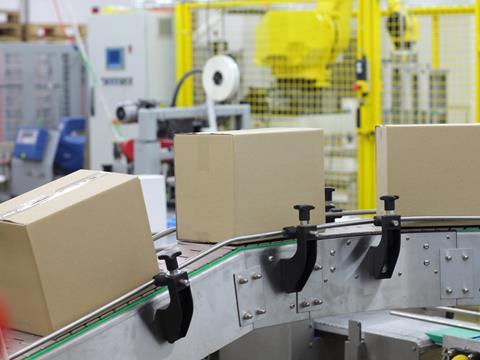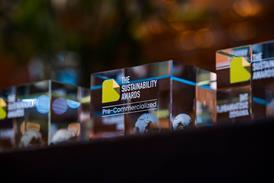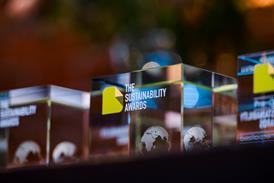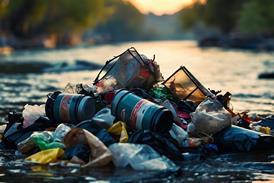
At the start of 2025, which evolving packaging trends should we all be keeping an eye on? According to Anna Perlina, sustainable packaging consultant at Integrity Solutions, outsourcing in particular is set to grow in prominence.
What? Outsourcing packaging activities? Many would be shocked because, historically, for many companies, packaging-related activities have been among their core functions, as packaging serves as the “face” and the “seller” of their brand.
Before diving into what can be outsourced, let’s recap the current packaging landscape that is driving this trend.
The rollout of sustainable packaging is being further driven by evolving packaging regulations and societal pressure around the world, aimed at reducing waste and pollution by establishing a common framework with challenging targets.
Despite many recent breakthroughs in sustainable packaging options regarding technologies, innovative materials, and operating models, the choices are not straightforward, and priorities often contradict one another. Business resources and time are limited for inventing, experimenting, investing, and dealing with the consequences of unsuccessful directions.
This requires new expertise in packaging design and development, as well as innovative marketing approaches to promote products wrapped in more sustainable packaging. Since this often involves minimalist concepts or demands compromises from consumers regarding convenience or aesthetics, it makes differentiation challenging.
In many cases, adopting sustainable packaging solutions will require cross-industry collaboration and a certain level of standardization in packaging or packaging models to achieve scalability and impact. Acting in silos is no longer effective, either from a business perspective or in terms of the scale of the desired environmental impact.
Packaging regulations come with new packaging reporting obligations and the need for data aggregation across the packaging value chain, from material extraction to end-of-life scenarios.
Shifting to more sustainable packaging is often viewed as a cost challenge. It frequently arises as an investment, leading to unforeseen pressures on businesses’ bottom lines, while consumer acceptance of new solutions and the ultimate choice of operating models remain uncertain.
Given this context, we can see that it’s time for complex and pivotal business decisions, where many parameters are still unknown. Despite this, steps must be taken today to be prepared for the regulatory requirements while ensuring financial viability and keeping consumers engaged through this change.
In my view, the response to this business challenge will be a trend toward outsourcing packaging-related activities, aimed at mitigating upcoming business risks and leveraging newly arising opportunities.
Businesses typically change their strategy from in-house to outsourcing when an activity becomes too complex, requires new resources, is costly or riskier to manage, or changes its importance to the business.
Historically, due to the significant role that packaging plays in branding and selling a product, most packaging-related decisions and activities—including innovation, development, and the packing process itself—were kept in-house.
Now, due to resource, time, and budget limitations, as well as changing packaging requirements, that model may no longer be effective. Given the uncertainty in the packaging landscape due to evolving technologies, materials, and emerging packaging regulations, outsourcing all or part of packaging activities can help test packaging options more quickly and avoid risky and substantial investments in internal expertise, resources, processes, and infrastructure.
What will be outsourced?
Essentially, any process or area of expertise that helps achieve speed, long-term cost efficiency, and counter business uncertainty in order to comply with packaging regulations in a timely manner and gain a competitive advantage by being among the first to meet the expectations of investors, partners, and consumers.
Below is a list of activities that, in my opinion, are relevant for outsourcing in today’s realities, especially in the context of limited internal resources to address new packaging challenges and onboard new activities:
1. Building a sustainable packaging vision and strategy, determining the direction to take and how to achieve it, interpreting evolving packaging regulations, and translating them into an actionable plan.
2. Quantifying the environmental impact of existing packaging value chains and comparing future options to make fact-based decisions and ensure transparent communications.
3. Outsourcing the packaging development and procurement strategy to gain faster access to existing knowledge and scalable solutions while managing costs.
4. Instead of inventing new, unique solutions, adopting off-the-shelf, proven, and scalable sustainable packaging options and models. For example, tapping into existing and evolving reusable/pre-fillable packaging ecosystems, allowing third parties to handle packaging and all logistics.
5. Opting for contract manufacturing for filling and packing to leverage external expertise, capabilities, and capacities to test and compare potential packaging concepts while postponing or even avoiding capital expenditure investments in-house.
6. Reporting on packaging data according to new legislation while incorporating differences in requirements across markets.
7. Outsourcing responsibility for packaging waste collection and its subsequent management.
Imagine shouldering all this complexity within your business. It can feel overwhelming, right?
So, what’s the business value in taking on the burden of managing these intricate activities internally when you can rely on external expertise to handle them efficiently and likely more cost-effectively on your behalf?
This approach allows you to concentrate on further perfecting your product, enhancing your service, and focusing your efforts on your consumers, keeping them engaged through this packaging shift.
If you liked this story, you might also enjoy:
The ultimate guide to the Packaging and Packaging Waste Regulation in 2024
How are the top brands progressing on packaging sustainability?
Sustainable Innovation Report 2024: Current trends and future priorities
Everything you need to know about global plastic sustainability regulation




















No comments yet